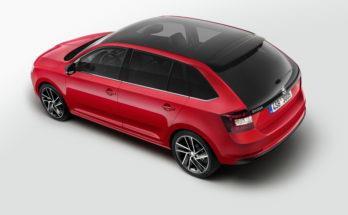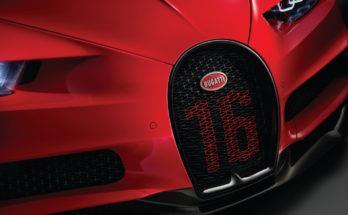Lexus unveiled its remarkable production-ready RC coupe today at the 2013 Tokyo Motor Show. The RC once again expands the scope of the Lexus brand by a new type of interested party and adds an emotional charge to the genetic makeup of the brand, which is already famous for its quality of workmanship, refinement and reliability.
The RC is part of the Lexus brand's revolutionary changes in terms of driving ability and handling , started with the GS model and then the new IS. It is a completely independent model , not a two-door variant of one of the sedans. The coupe built on the GS platform differs in all its dimensions from the GS and IS series. The fiercely rendered coupe is presented at the Tokyo Motor Show with two power units: a 3.5-liter V6 petrol unit in conjunction with an eight-speed automatic sequential transmission, or hybrid drive with a 2.5-liter gasoline engine supplemented with an electric motor.
Chief designer Junichi Furuyama , who is also responsible for the development of the IS model range, aimed to achieve a stronger bond with customers on an emotional level with the RC coupe : " Car enthusiasts have always wanted coupes for one obvious reason: coupes simply look sensational – or they are even sexy. When developing the RC, we focused on a responsive response that is intended to encourage the driver, but not overwhelm; that is exactly in the spirit of Japanese hospitality, or omotenashi.''
Exterior design
The RC model was rendered using high-profile curves and Lexus' signature spindle-shaped grille, which is the widest and lowest ever . In the Lexus model range, the RC occupies a unique position – it is 30 mm wider and 35 mm lower than the new Lexus IS, with a 70 mm shorter wheelbase, while its stance emphasizes the attractive shapes of the luxury two-door car.
Unique headlights at the front and rear use the iconic Lexus L-shaped motif . You can choose between two types of cast wheels – strikingly shaped 19" ten-spoke wheels, or athletically conceived 18" five-spoke wheels. The color of the heroes is red – here in a brighter and more contrasting shade, thanks to the new paint technology.
Interior design
The interior of the RC model, with its massive use of contrasting colors, materials and lighting, is largely influenced by the brand's award-winning sports concepts . A specially created new lighting package (a first for Lexus) evokes a strong sense of uniqueness thanks to the way the entire cabin is illuminated from the bottom up , instead of the usual top down. The high-contrast colors in the interior emphasize the design curves and highlight the overall elegance of the cabin. The upholstery in the car's cabin is accentuated by original Shimamoku striated wood accents – the result of the sophisticated technology of refined laminated wood processing.
The upper part of the driver's cockpit is divided into control and display zones. In the upper part is the instrument panel and the screen of the multimedia and navigation system with a diagonal of 7″. The multi-level center console features a new 'Remote Touch' clustered controller (again a Lexus first). What is important about the sports coupe is that the so-called integrated foam structure was used in the production of the seats – similar to the shaping of racing car seats – guaranteeing optimal comfort and support for passengers.
Driving dynamics
The stiff and specially modified RC chassis is the latest example of the Lexus brand's effort to offer top driving pleasure, embodied also by the excellent driving capabilities of the GS and IS design series.
Particularly strong sills in the lower part of the body contribute to the significantly higher rigidity of the coupe. New manufacturing processes , such as gluing of metal body joints, used for the first time on the LS and IS models, helped to increase the robustness of the chassis. Aerodynamic elements , especially in the lower part of the car, also have a positive effect on driving capabilities. A double wishbone suspension is used on the front axle of the RC, and a multi-link multi-element suspension is used on the rear.
Modern technology
The RC is the first Lexus model to use an improved system for monitoring blind spots (Blind Spot Monitor), which detects cars approaching from behind at a higher speed, and at a greater distance than the system used until now. For the enjoyment of driving in a coupe, the response to touch is also very important, which is why the advanced touch interface RTI (Remote Touch Interface) was used in the RC to control the audio system and navigation.
Power units
The liter output of the RC power unit is the second highest in the Lexus model line after the LFA supersport . The 3.5 liter V6 petrol engine with dual fuel injection achieves a maximum power of 318 hp at 6,400 rpm and a maximum torque of 380 Nm at 4,800 rpm. The eight-speed Sports Direct Shift transmission with paddle shifters under the steering wheel, taken over after modification from the IS F model , helps to achieve optimal power distribution and the lowest possible fuel consumption. In M (manual) mode, with torque converter lockup, between second and eighth gears can be downshifted in just 0.2 seconds .
In the version with a full hybrid drive (it is the first hybrid coupe of the Lexus brand), a 2.5-liter four-cylinder gasoline engine with dual injection and an output of 143 horsepower is combined with an electric motor and an electronically controlled continuously variable transmission with six virtual gear stages and the possibility of manual sequential shifting.
Depending on the individual markets, the RC coupe will be equipped with either rear-axle drive or all-wheel drive. The engine has been acoustically tuned to provide an appropriately exciting soundtrack during agile driving.
Source: Lexus



